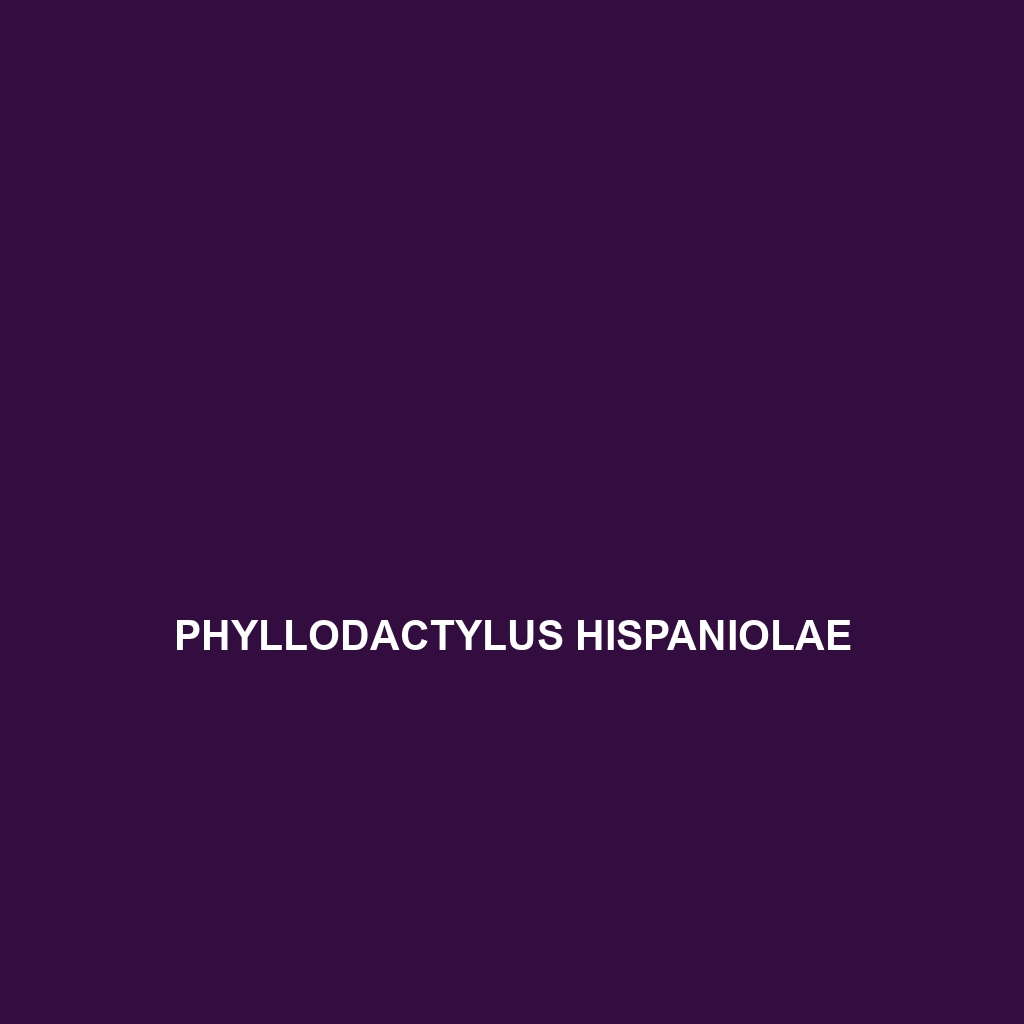Common Name
Phyllodactylus hispaniolae
Scientific Name
Phyllodactylus hispaniolae
Habitat
The Phyllodactylus hispaniolae, commonly known as the Hispaniolan Leaf-toed Gecko, is predominantly found in the diverse and richly biodiverse regions of Hispaniola, comprising both the Dominican Republic and Haiti. This species thrives in various habitats, ranging from tropical rainforests to savannas, demonstrating a remarkable adaptability to different environmental conditions. The typical climate of Hispaniola includes warm temperatures and high humidity levels, especially in lowland rainforests. This gecko is often spotted on rocky terrains and areas with abundant foliage, which provides ample cover and hunting grounds. The understory of these forests, where leaf litter accumulates, plays a significant role in the life cycle of Phyllodactylus hispaniolae, offering a complex microhabitat crucial for shelter and foraging.
Physical Characteristics
The Phyllodactylus hispaniolae displays several distinctive physical features that can help in its identification. Generally, this gecko measures approximately 10 to 15 centimeters in length. Its body is slender with elongated limbs, which aids in its arboreal lifestyle. The skin coloration varies, typically exhibiting hues of beige, brown, or gray, with subtle patterns that provide effective camouflage against natural substrates. One of the most striking features of this species is the leaf-shaped toes, which facilitate a remarkable grip on surfaces, enabling it to navigate complex environments with ease. These adaptations not only aid in climbing but also contribute to its predatory efficiency.
Behavior
Phyllodactylus hispaniolae is primarily nocturnal, showcasing an array of fascinating behaviors that come alive in the darkness. During the night, these geckos engage in active foraging, utilizing their keen vision to hunt insects and other small prey. Socially, they are relatively solitary creatures, often establishing territories that they monitor vigorously. Mating rituals are typically marked by elaborate courtship displays, including tail waving and body posturing. This species is known for its unique defense mechanisms; when threatened, it may shed its tail, which continues to wiggle, distracting predators while the gecko makes its escape.
Diet
The Phyllodactylus hispaniolae is an insectivore, primarily feeding on a diet of insects such as crickets, beetles, and moths. Their hunting approach is characterized by ambush tactics and a swift strike, utilizing their excellent camouflage to blend into their surroundings. Young geckos have been observed to consume smaller invertebrates, adapting their diet based on size and availability of resources. This reliance on a protein-rich diet not only aids their growth but also plays a significant role in controlling insect populations within their ecosystem.
Reproduction
The reproductive cycle of Phyllodactylus hispaniolae typically occurs during the warmer months of the year, influenced by seasonal climatic conditions. Mating season generally peaks in early summer, with females laying clutches of 2 to 3 eggs in hidden locations such as crevices or beneath leaf litter. The incubation period lasts approximately 40 to 60 days, depending on temperature and environmental conditions. Upon hatching, the offspring are independent and begin feeding almost immediately, showcasing their instinctual behaviors. Parental care is absent in this species, as the adults do not remain to protect or nurture the hatchlings, which must fend for themselves in their challenging environment.
Conservation Status
Currently, Phyllodactylus hispaniolae is classified as a species of least concern by the International Union for Conservation of Nature (IUCN), primarily due to its relatively wide distribution across Hispaniola. However, like many species, it faces threats from habitat destruction, primarily caused by deforestation and urban development. Conservation efforts are essential to maintain healthy populations and mitigate threats, with initiatives focusing on habitat protection and restoration. The ongoing challenges of climate change and invasive species also pose risks that must be addressed to ensure the survival of this unique gecko.
Interesting Facts
One fascinating aspect of Phyllodactylus hispaniolae is its ability to adapt to a variety of microhabitats within its range. These geckos exhibit a variety of colors and patterns, with some individuals displaying brilliant coloration during courtship. Also, researchers have noted that this gecko has a unique “chewing” motion while eating, which aids in processing its insect prey more effectively. The lizards have developed special adaptations such as their specialized toe structures that not only facilitate climbing but also minimize noise when traversing branches, aiding in their stealth during hunting.
Role in Ecosystem
The Phyllodactylus hispaniolae plays a crucial role in the ecosystems of Hispaniola. As a predator of insects, it helps regulate insect populations, contributing to the overall health and balance of its habitat. Moreover, its presence serves as an indicator of ecosystem health, as changes in its population can reflect alterations in environmental conditions. The gecko also contributes to the food web, serving as prey for various larger animals, including birds and reptiles, highlighting its importance in maintaining biodiversity.
